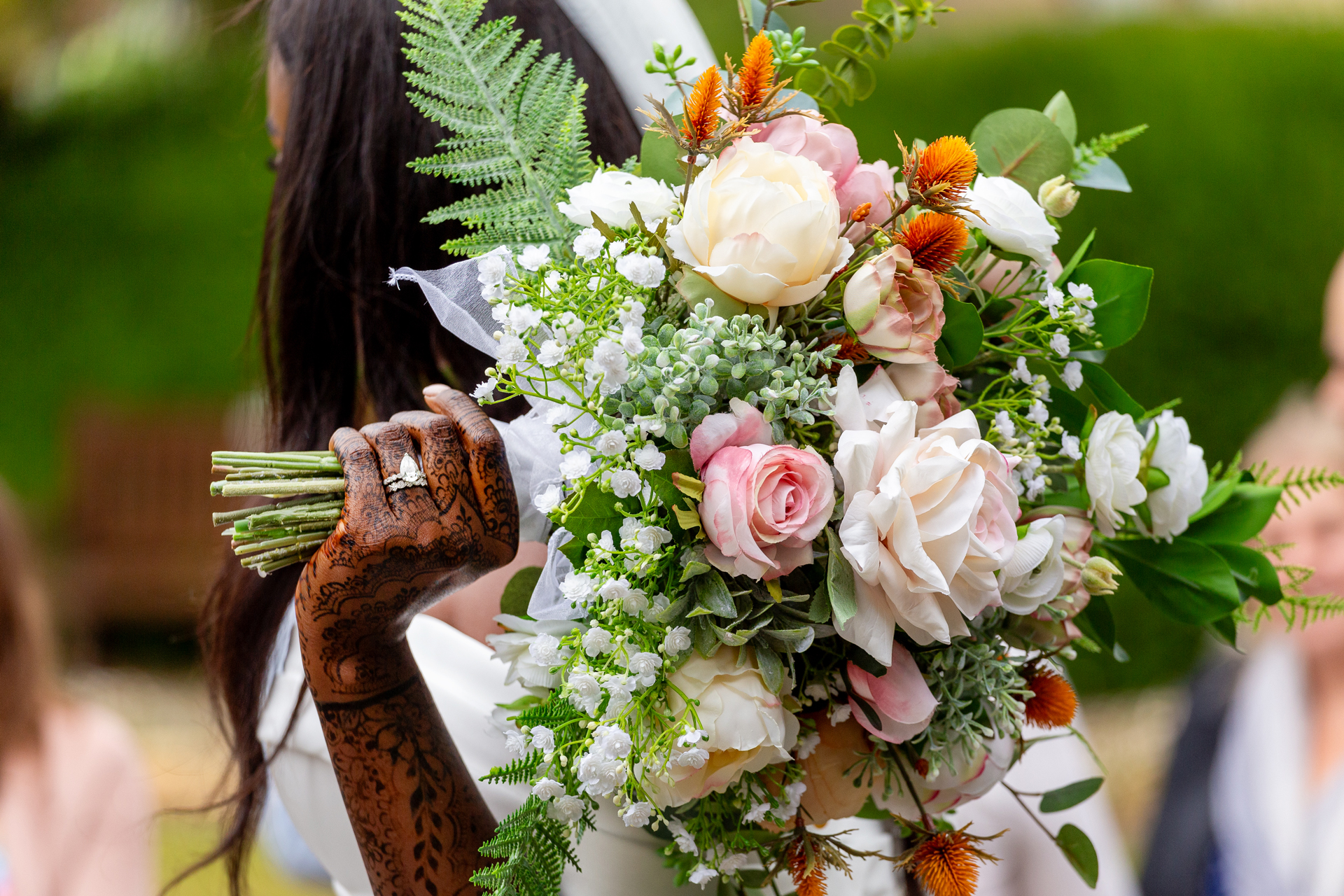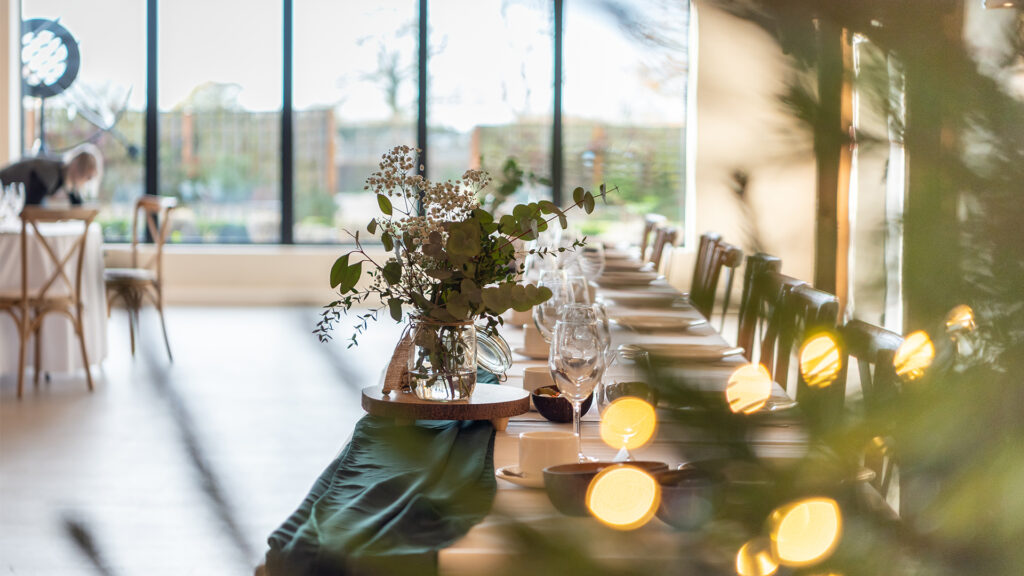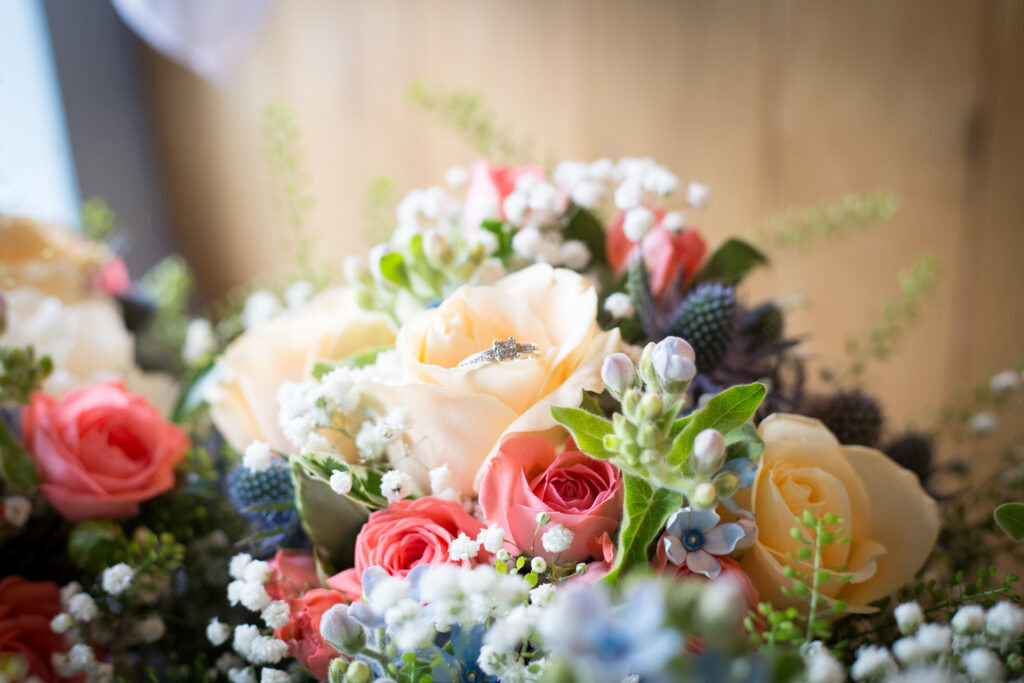Planning a wedding is a crazy journey filled with countless decisions, and one of the most significant choices couples face is selecting the perfect flowers. Your bouquet not only complements your bridal look but also sets the tone for your entire wedding theme. It can all feel a little overwhelming – there are many moving parts and figuring out everything you should be considering can be a little be daunting. Wedding flowers may seem like a small part of the day, you may be thinking I just need flowers for the wedding tables, a bouquet and some buttonholes but there’s actually a lot more too it.
Make a checklist
Before you book your wedding florist, it’s key to make sure you know what you’d like. Bringing along any inspiration you’ve collected can really help and you should reference your checklist to be completely prepared. Remember – this is just a general guide, so don’t feel pressured to have every kind of wedding flower on the list! Your wedding florist will be able to work with you to meet your budget.
Where you want flowers?
When the list starts coming together, it might be surprising how many flowers are actually needed for an average wedding celebration. Between bouquets for the bride, bridesmaids, table decorations, flower girls and button holes the list really starts to grow. Try to split your list into sections for each part of your day such as:
- Bridal party
- Grooms party
- Cars
- Ceremony
- Wedding breakfast
- Reception
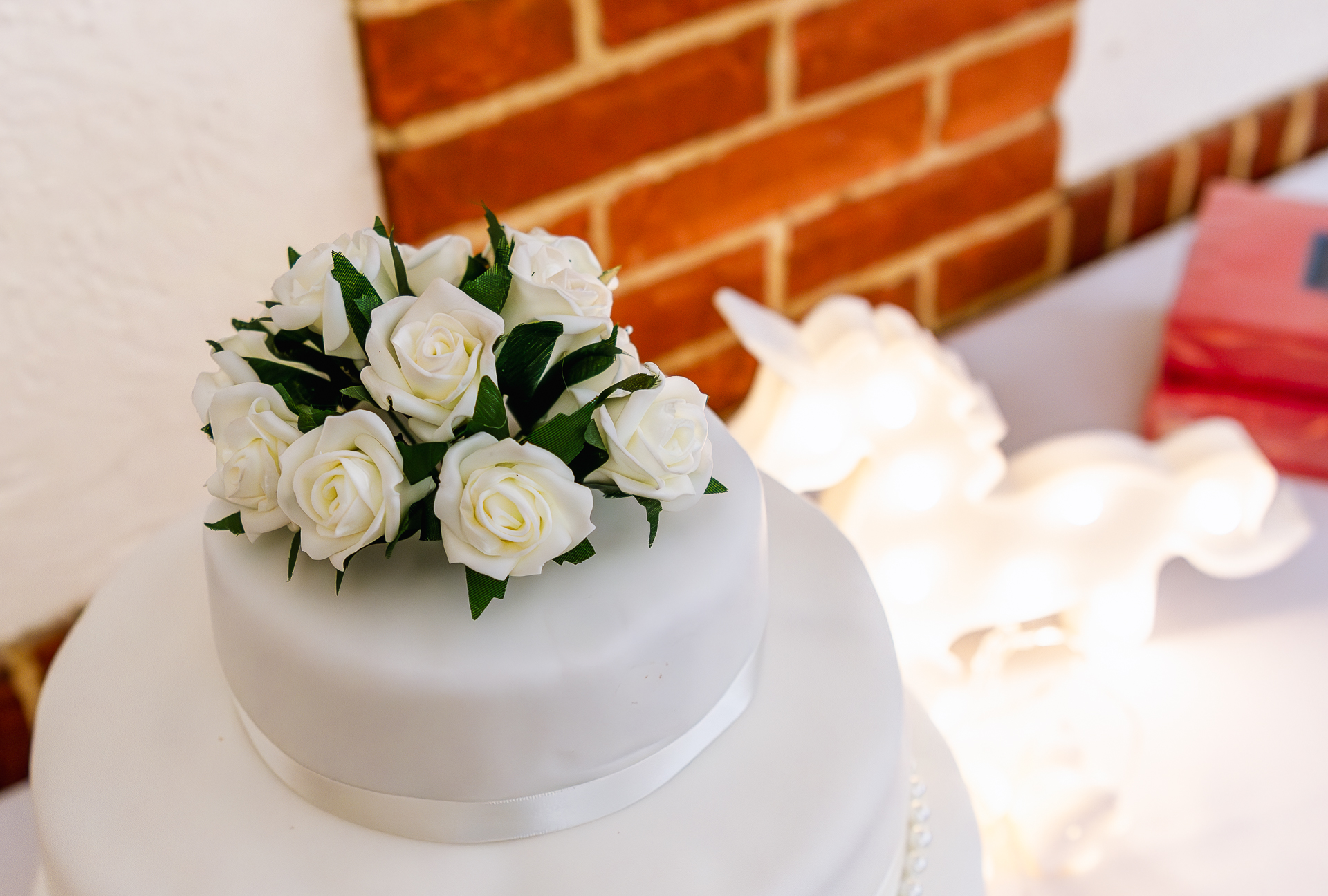
Seasonality
This might seem obvious but what flowers you can get will vary greatly by season. If you love sunflowers but are getting married in March, you may have to plan for this by
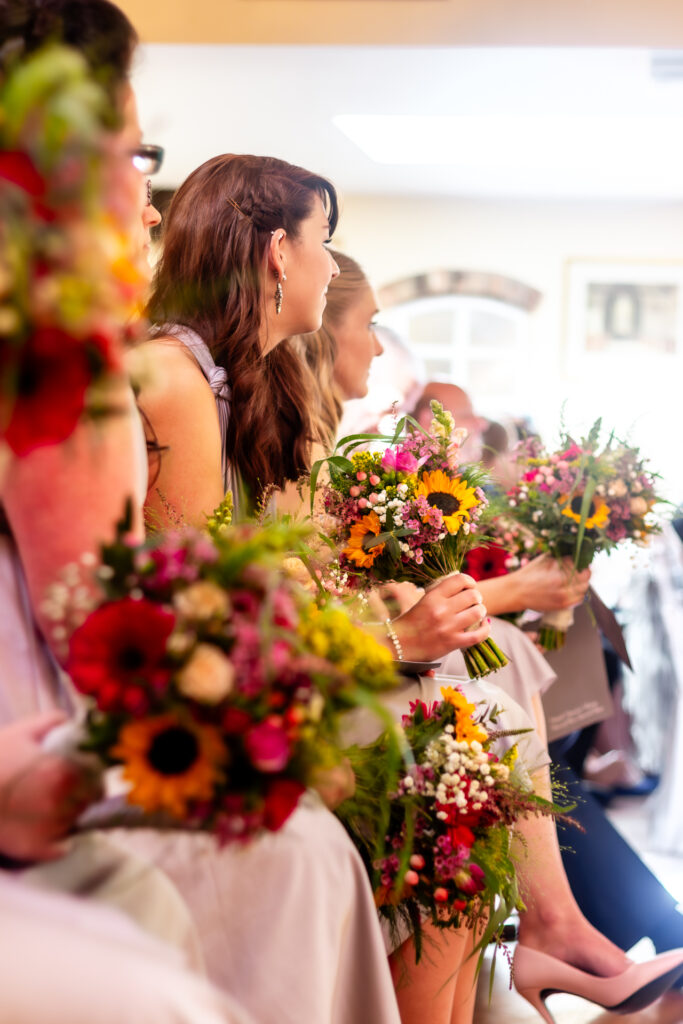
finding a florist who can order the type you want well in advance or switching out for a faux floral arrangement may be a good option. December weddings mean venues may have Christmas decorations up, which could be a welcome addition or annoying distraction. One of the best ways to ensure your bouquet is fresh and vibrant is to choose seasonal flowers. Not only are seasonal flower often more affordable, but they are a reflection the beauty of the time of year.
Here’s a quick seasonal breakdown:
- Spring: Tulips, daffodils, and peonies
- Summer: Sunflowers, dahlias, and garden roses
- Fall: Mums, hydrangeas, and marigolds
- Winter: Amaryllis, evergreen sprigs, and anemones
Design
Bouquets come in various styles, shapes and sizes, each offering a unique aesthetic. Here are a few popular options:
- Cascade Bouquets: Flowing downwards, these bouquets create a dramatic look, perfect for formal weddings.
- Posy Bouquets: Small and round, these are classic and easy to hold, making them a popular choice for many brides.
- Wildflower Bouquets: Loose and free-spirited, these arrangements capture the essence of nature and are perfect for outdoor weddings.
- Nosegay Bouquets: Compact and often made with fragrant blooms and herbs, these are traditionally smaller and can be adorned with ribbons or lace.
Choosing a style that resonates with your personality and wedding theme will make your bouquet a true reflection of you.
Colour and symbolism
If you have a very specific colour palette in mind, speak to a florist to help you pick out blooms which really compliment your day. They will have expert knowledge on the exact colours, shapes, sizes and seasonality of each type of flora. Many flowers carry specific meanings and symbolism, which can add a personal touch to your bouquet.
For example:
- Roses symbolise love and passion.
- Lily of the Valley represents sweetness and humility.
- Sunflowers convey adoration and loyalty.
- Peonies symbolize good fortune and happiness.
Choosing flowers that hold special meaning for you and your partner can make your bouquet even more significant.
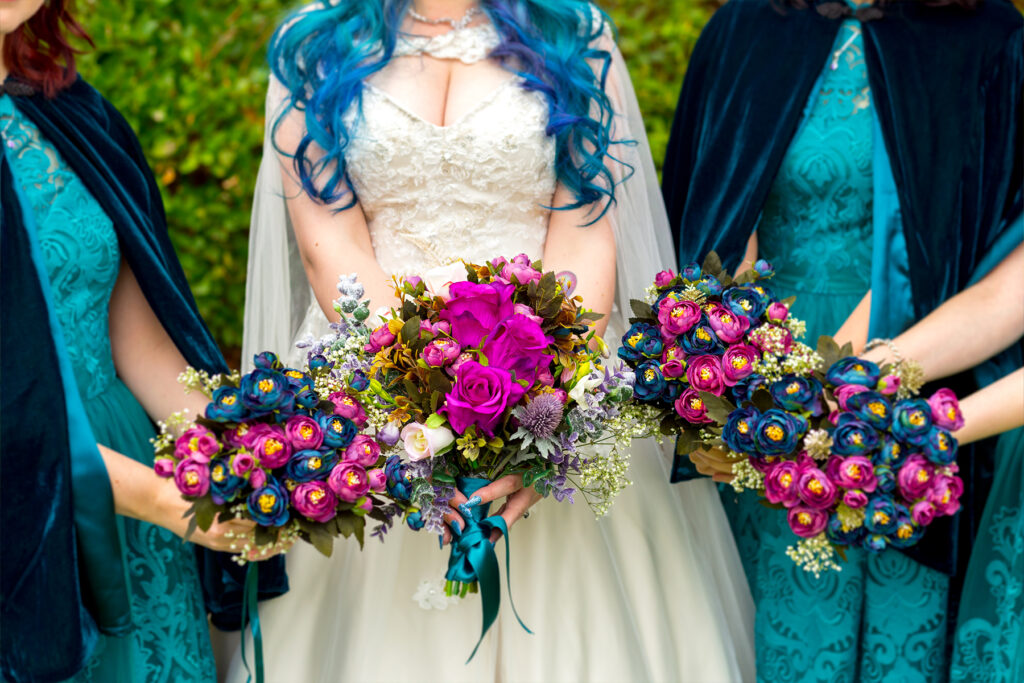
Flower arranging course
The option to order flowers in will always be available, but for couples who like to be more hands on there are many great options. Attending a flower arranging course could be a brilliant hen or stag do idea for couples looking for quieter low-key activities and will leave you with a skill set for life!
Crafted flowers
One of the most fun things about photographing unique weddings are all the things couples make themselves. If you have a creative flair, consider assembling your bouquet or enlisting friends and family to help in the making process. Origami flowers make for an interesting geometric design and could even be made from pages of your favourite comic book. One bride even made a crochet bouquet! how cool is that?
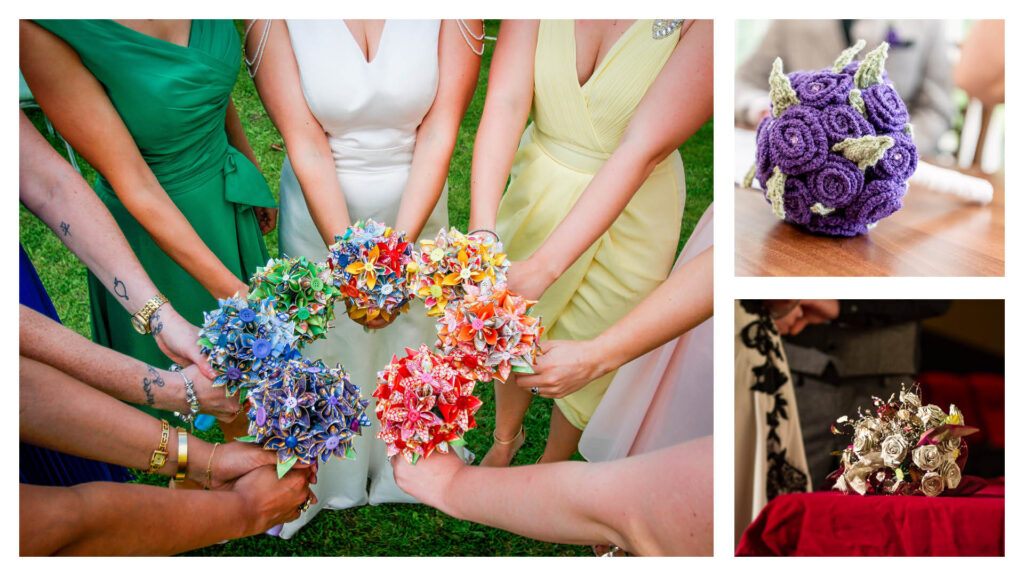
Faux flowers
Hands down the best thing about faux flowers is the fact you can keep them forever, and who wouldn’t want that! Whilst they can be pricey, good quality silk flowers are almost indistinguishable from the real thing.
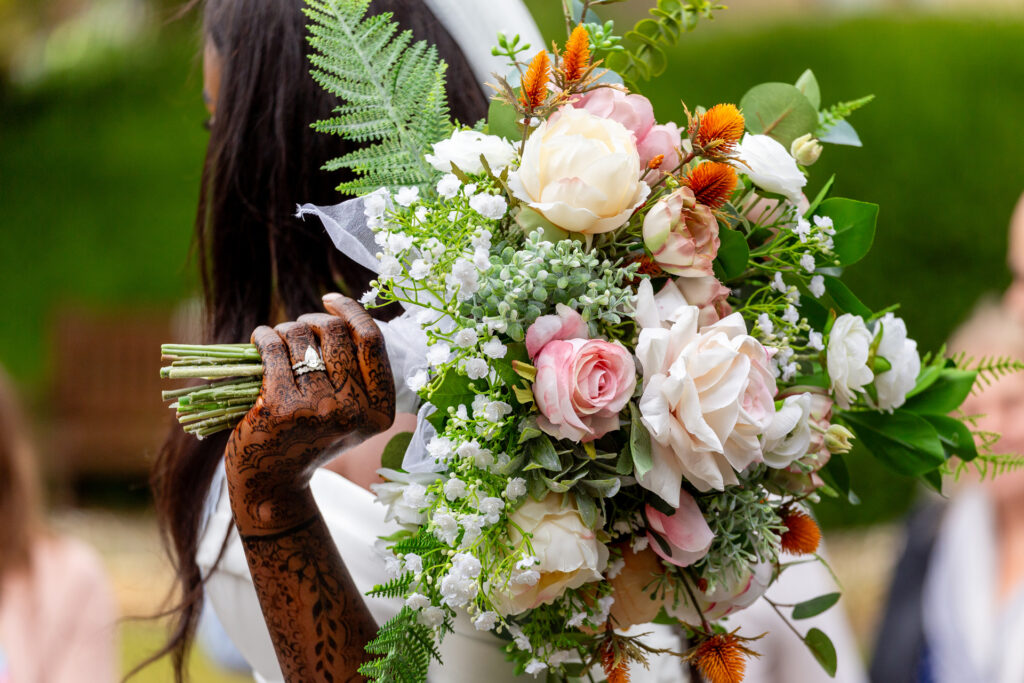
Recycling
One great option for keeping real flowers is to dry them. By doing this you can have beautiful real flowers and also keep your bouquet forever. Here are some ideas of what to do with your preserved flowers
- Collect the flowers from table centrepieces and make them into a beautiful wreath for your front door
- Create bunches to give to guests or staff helping out as they leave
- Dry out the flower heads to create sweet-smelling potpourri for your home
- Place them into resin to create beautiful home decor
- Press the flowers and create an art piece to hang on your walls
Your bouquet, your Story
Ultimately, your wedding flower bouquet should be a reflection of your style, personality, and love story. Take the time to explore different options, consider your preferences, and choose blooms that resonate with you. Whether you opt for classic elegance or a wildflower arrangement, your bouquet will be a beautiful accessory as you walk down the aisle, marking the beginning of your new journey together. Happy planning!
